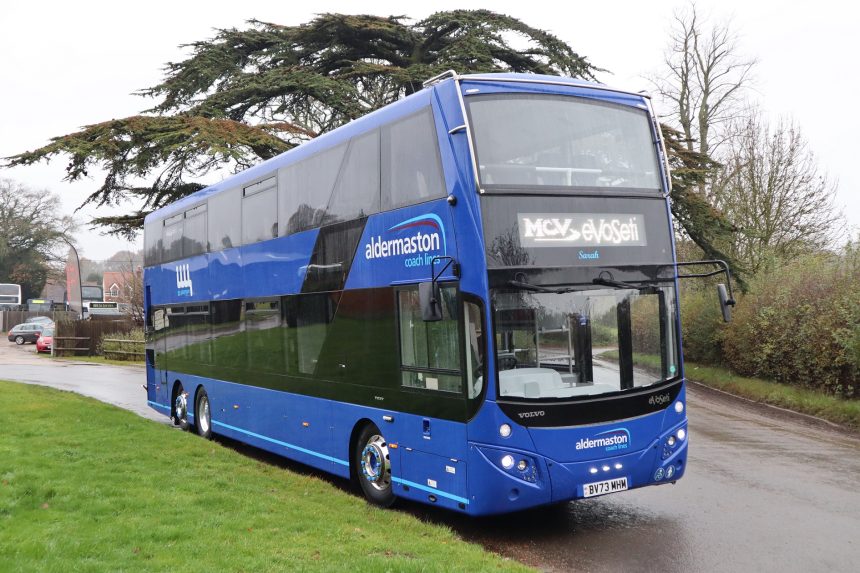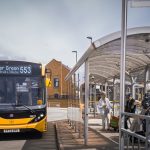Capacity can be king if an operator has work to justify it. That is the case for Aldermaston Coach Lines, which took delivery of a pair of tri-axle Volvo B8L buses with MCV EvoSeti bodywork in late 2023 to capitalise on such requirements.
The B8L is currently the only tri-axle double-decker bus available in the UK. In MCV-bodied form it is a development of a product for the Hong Kong market. There, such vehicles are used on local services, but for Aldermaston Coach Lines the application is different. Its two are occupied on a mix of school services and private hires, and rail replacement.
Aldermaston Coach Lines is a young business, having been established in 2019. But founder Nick Morton has significantly more industry experience, including a managerial position with a coach operator in Florida. That came after he and his brother Adrian sold Mortons Travel to Lucketts Group in 2018.
Before that, a Mortons’ USP was its pool of high-capacity double-deckers. After a year in Florida, and with the support of his wife who stayed behind, Nick returned to England to start his business with an intention of running a single coach and driving it himself.
That approach, as Southern Coach Lines, lasted for two months, at which point another vehicle was justified. Local school contracts were then bundled, and the firm bid successfully for five vehicles’ worth of work. Private hire was also building.
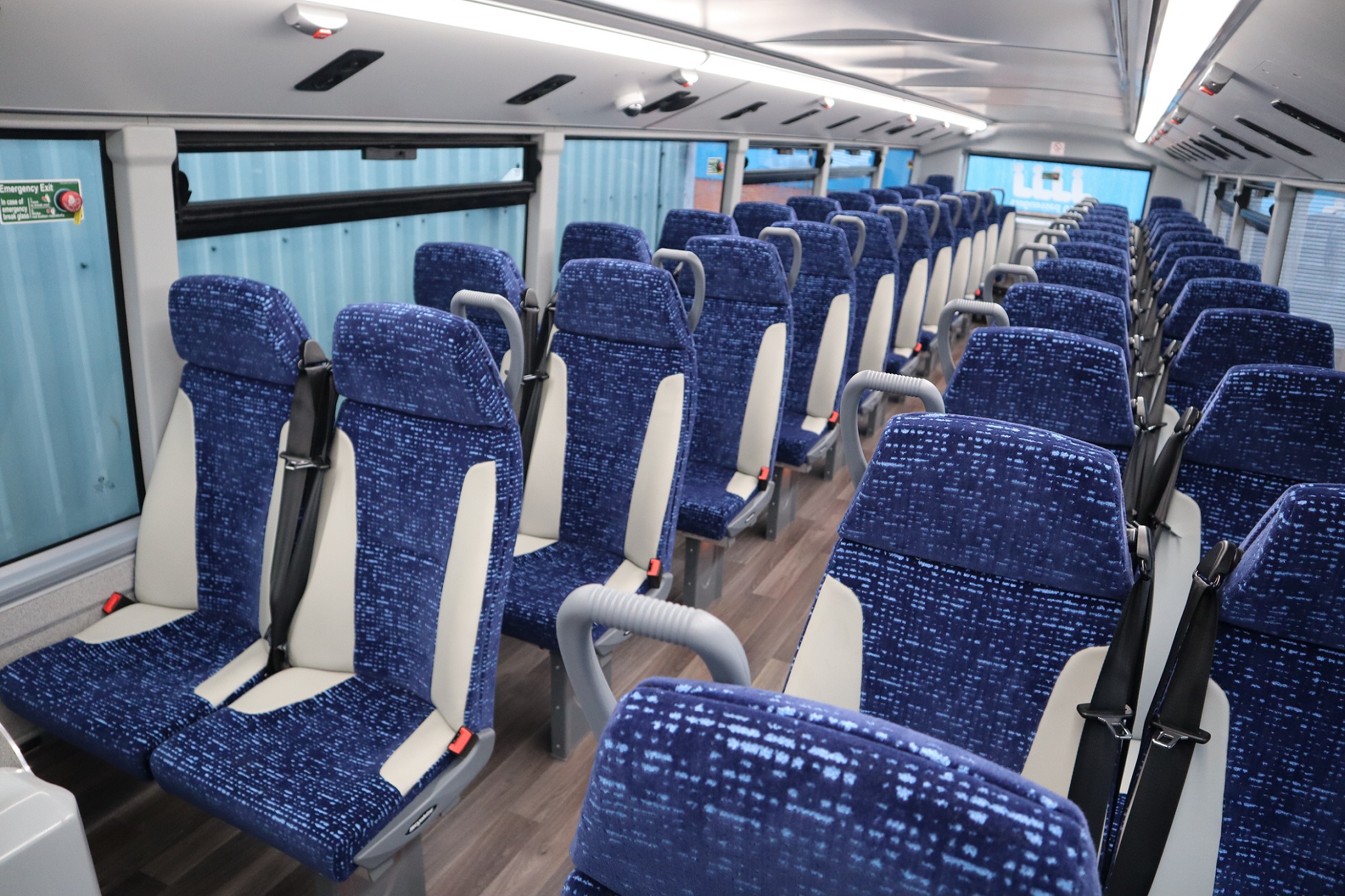
Experience leads Aldermaston Coach Lines’ decision on B8L pair
“In 2020 at the start of the pandemic, another operator nearby – Aldermaston Coaches – told me that it was going to close,” Nick explains. “That business was a partnership, and from an O-Licence point of view you cannot purchase a partnership. I took on the Aldermaston name, the depot, some assets, and its book of work.”
With a focus on home-to-school transport, COVID-19 had a less severe impact than it did on some other operators. A first new coach, a Volvo B8R with Plaxton Leopard bodywork, arrived in 2021. It was soon followed by a former demonstrator B11R with an MCV Evotor body. 24 vehicles now make up the fleet.
Nick was hosted by MCV and Volvo in Egypt during 2017 and viewed a B8L EvoSeti for Hong Kong. Mortons’ high-capacity buses “were the cornerstone of that business,” he adds. During 2017, with the B9TL that formed the base of earlier tri-axles out of production, the manufacturer’s UK and Ireland business identified an opportunity for the B8L.
While the B8L has won major orders with Lothian Buses and Stagecoach East, Volvo sees it as a dual-purpose product. It suits conventional bus use, as in Edinburgh, Cambridge and Hong Kong, but with 350bhp on tap and – with an MCV body – air-conditioning available, it lends itself to other applications.
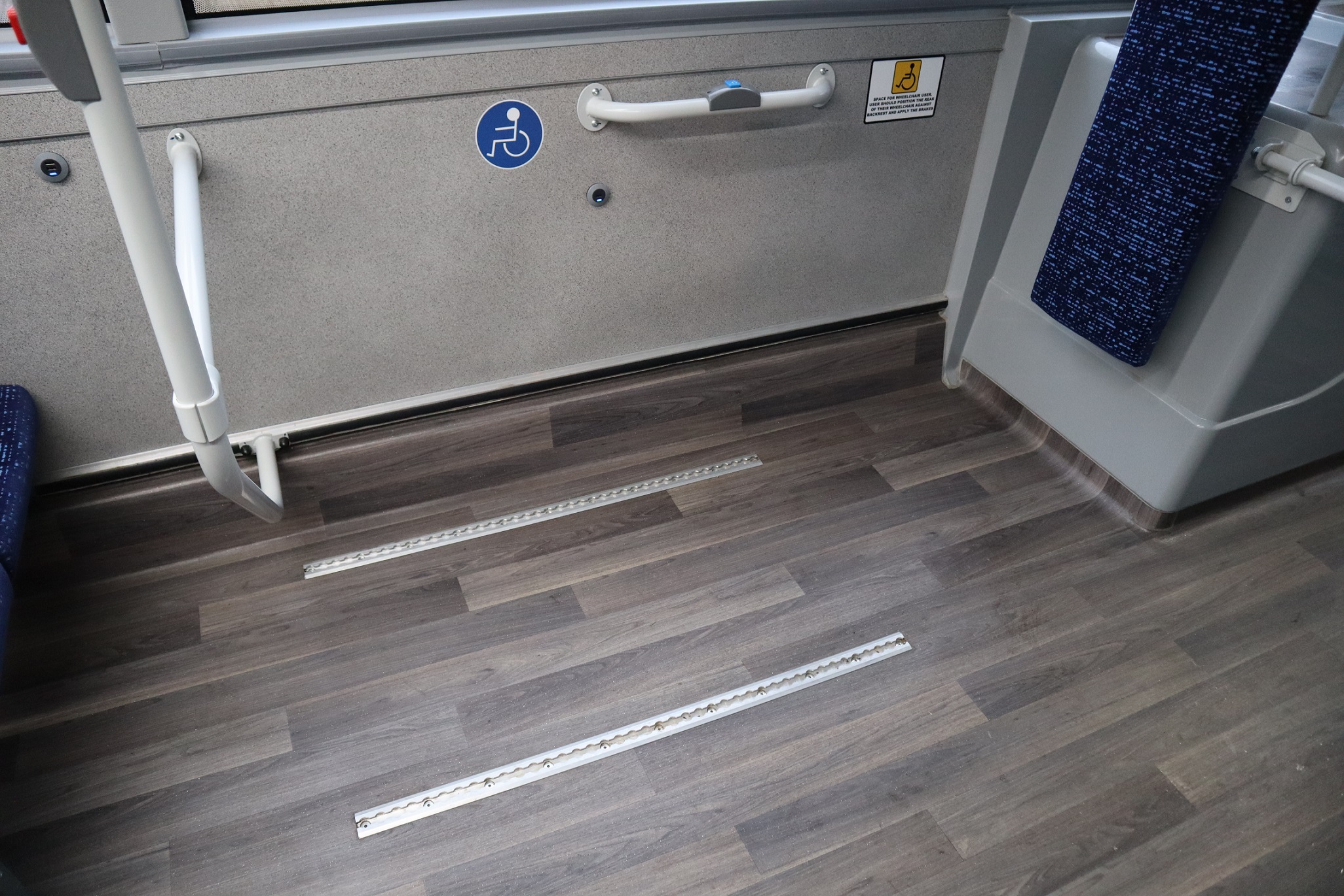
Volvo presently offers the combination at 12m and 12.8m. Those for Aldermaston are 12.8m, and they seat 98 in high-backed positions. The B8L is built to order. Aldermaston was thus able to closely tailor its two, which is reflected in a customised interior specification.
The operator has thus created a vehicle that is well suited to short- and medium-distance private hire work. Nick kindly made one available for a routeone test drive.
Specification is key for Aldermaston Coach Lines, says owner
At 12,780mm, the EvoSeti as tested is an imposing machine. That is furthered by the operator’s blue and black livery, which sits well on the MCV’s lines. A glazed staircase is included, but with black lining around it and the lower deck windows, the effect is not as visually obvious as when fitted to vehicles painted in lighter colours.
Drive is from a 7.7-litre D8K engine developing 350bhp and 1,400Nm of torque and a ZF EcoLife automatic gearbox. The tag axle does not steer. That may be expected to hinder manoeuvrability, although when navigating Newbury town centre, it did not prove to be the case. Drag when turning will likely increase when the bus is heavily loaded, however.
60 seats are upstairs and 38 downstairs. They are the Vogelsitze Arondo Combi type with three-point belts and finished in a blue-based moquette to match Aldermaston’s livery, along with light grey wings in synthetic leather. A sturdy upright handhold is fitted to each aisle position.
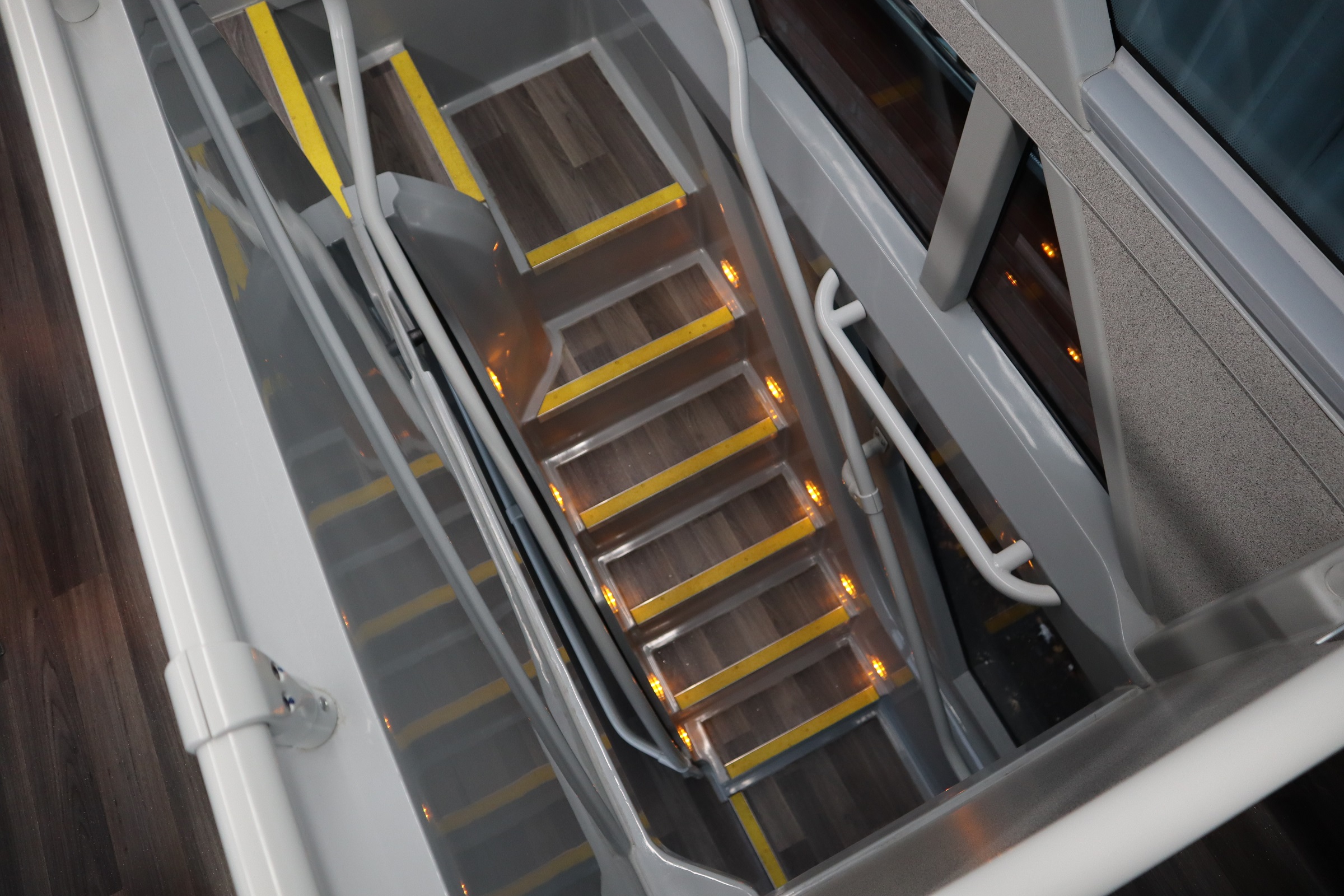
On the lower deck, stanchions in matching grey with bell pushes are installed. Upstairs, none are present, giving a ‘clean’ look for this saloon. Bell pushes are within the coving. Each rear row of seats has four positions. That is a necessity downstairs to take account of the emergency door placement. Twin rear axles result in two bays of facing positions on each side on the lower deck.
Newcomers reach the century in passenger capacity
To the seats are added space for a wheelchair user and a standee for a capacity of 100. There are no tip-up positions within the wheelchair user bay. Because of that, Aldermaston is hopeful that it can work with DVSA to gain approval for a removable forward-facing seat pair there that is mounted on tracking. Such an approach was used by Mortons on the Optare Olympus, and Nick is keen to repeat it on the EvoSetis.
Denso air-conditioning is fitted, although it can be deleted should the customer require. Ducting is ceiling-mounted. 14 lockable hopper vents are included. Nick views air-conditioning as an imperative for the work that Aldermaston’s EvoSetis will be used on.
Other elements of the interior include a custom-made luggage rack over the nearside front wheel, USB charging points, a PA and sound system, lockable doors, and ‘night lights’ under the seats. While headroom on the upper deck is as would be expected, that downstairs is excellent at well over 6ft. The staircase is wide and well lit.
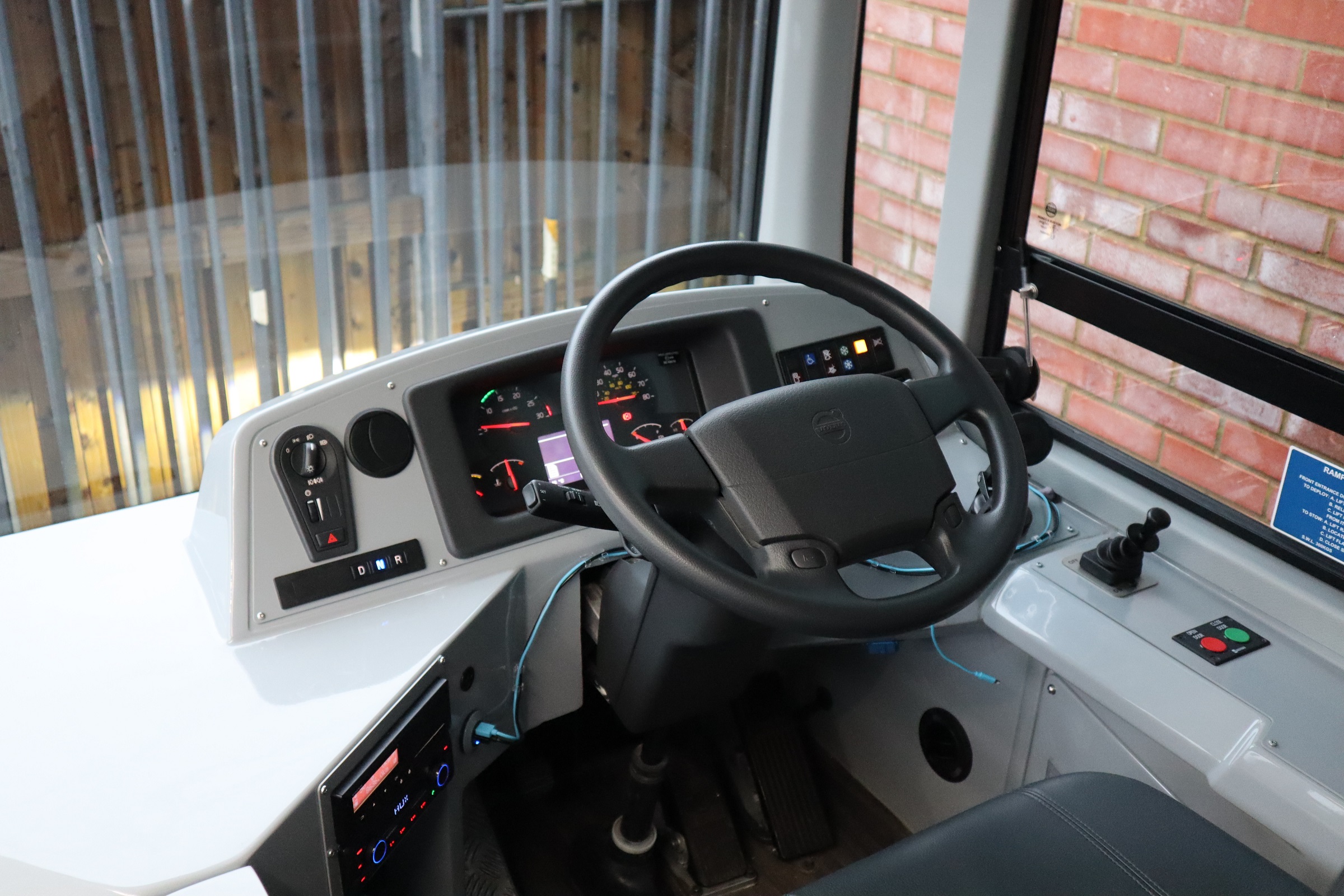
The driver’s area is large and straightforward, although a minor complaint of Nick’s is that a fuel gauge is lacking. Rail replacement can see vehicles away from base for multiple days, and an indication of diesel level would thus be useful.
The standard Volvo binnacle is provided, with controls and other items grouped around it. Those used more often, such as for the doors, interior lighting, and the handbrake, are to the right. Others are to the left.
The Chapman seat is not air suspended and the steering wheel adjusts via the traditional Volvo third pedal. Conventional rear-view mirrors are fitted, although MCV will introduce a camera system later.
B8L EvoSeti combination proves surprisingly nimble
The bulk of a tri-axle double-decker may create an impression that they are unwieldy. The B8L’s driving experience does not back that up. While the test drive was carried out unladen, a strong point of the combination is its relatively low unladen weight; at 14,762kg, that is less than might be expected for a vehicle of its size.
350bhp is an appropriate rating for a bus of this type and application. The Aldermaston pair are limited to 56mph, and the B8L is composed at that speed. Even on a windy day it held the M4 motorway well, and the EcoLife gearbox is not shy about dropping a ratio on climbs, spinning the D8K to approaching 2,000rpm in doing so.
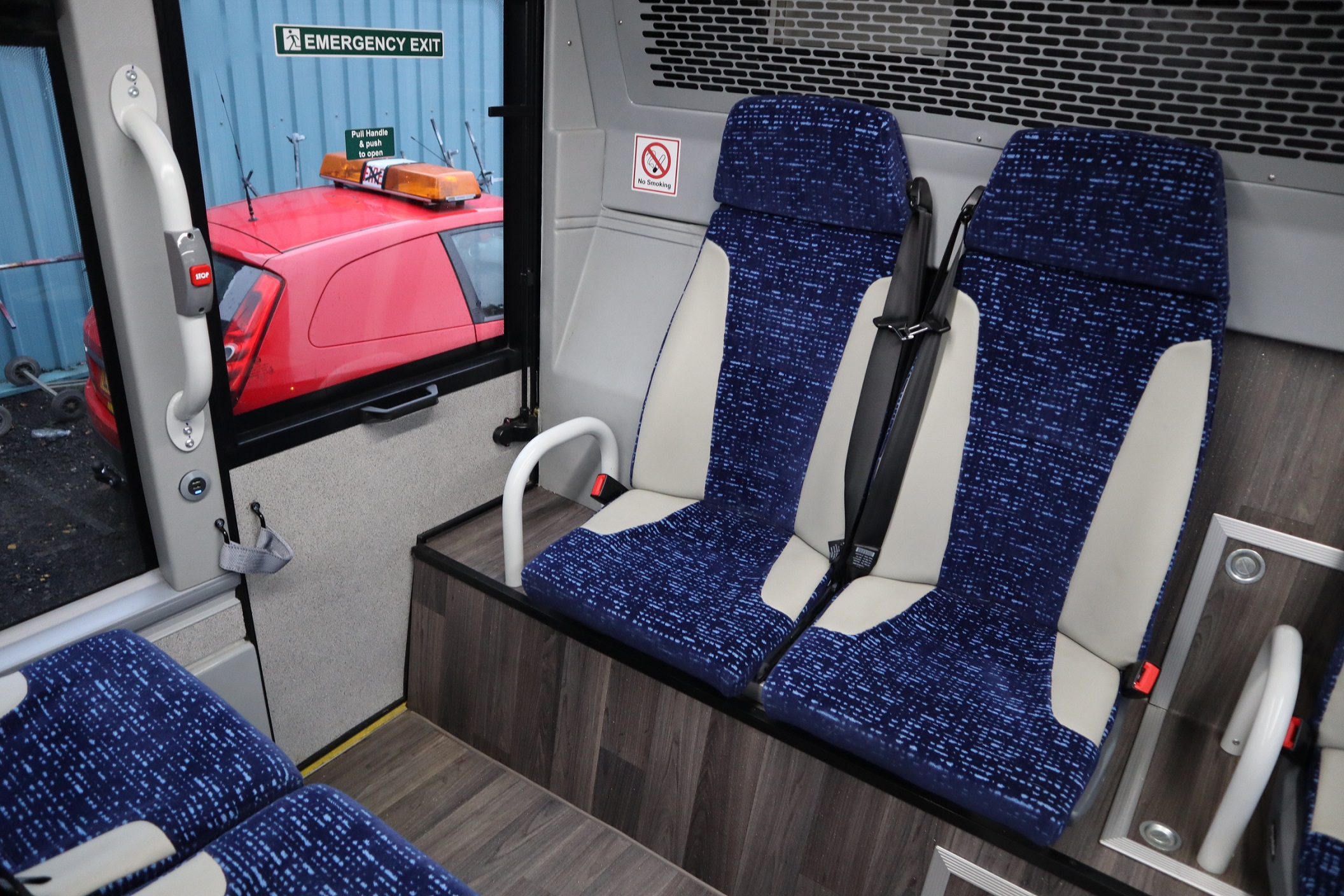
In slow urban traffic the opposite strategy is employed, with engine speeds kept low. Fuel economy will never be the primary consideration in a bus of such size and with a powerful air-conditioning unit, but the D8K has long proved itself highly frugal in Volvo’s B8R and B8RLE chassis. The B8L pair currently average 8mpg, Nick has calculated.
Acceleration is more than adequate and the B8L is, for its size, an easy vehicle to drive. Good mirrors help in that respect. ‘Flank cameras’ have been fitted at the rear to enable monitoring of the vulnerable overhang, along with a reversing camera.
High capacity vehicles are successful in their niche
Nick is a Volvo fan, and the Aldermaston Coach Lines fleet contains vehicles that extend back to the B10M, including a Citybus from 1989 that seats 98 in heavily rebuilt East Lancs bodywork. The nearby dealership is rated highly and OEM parts across the board are available.
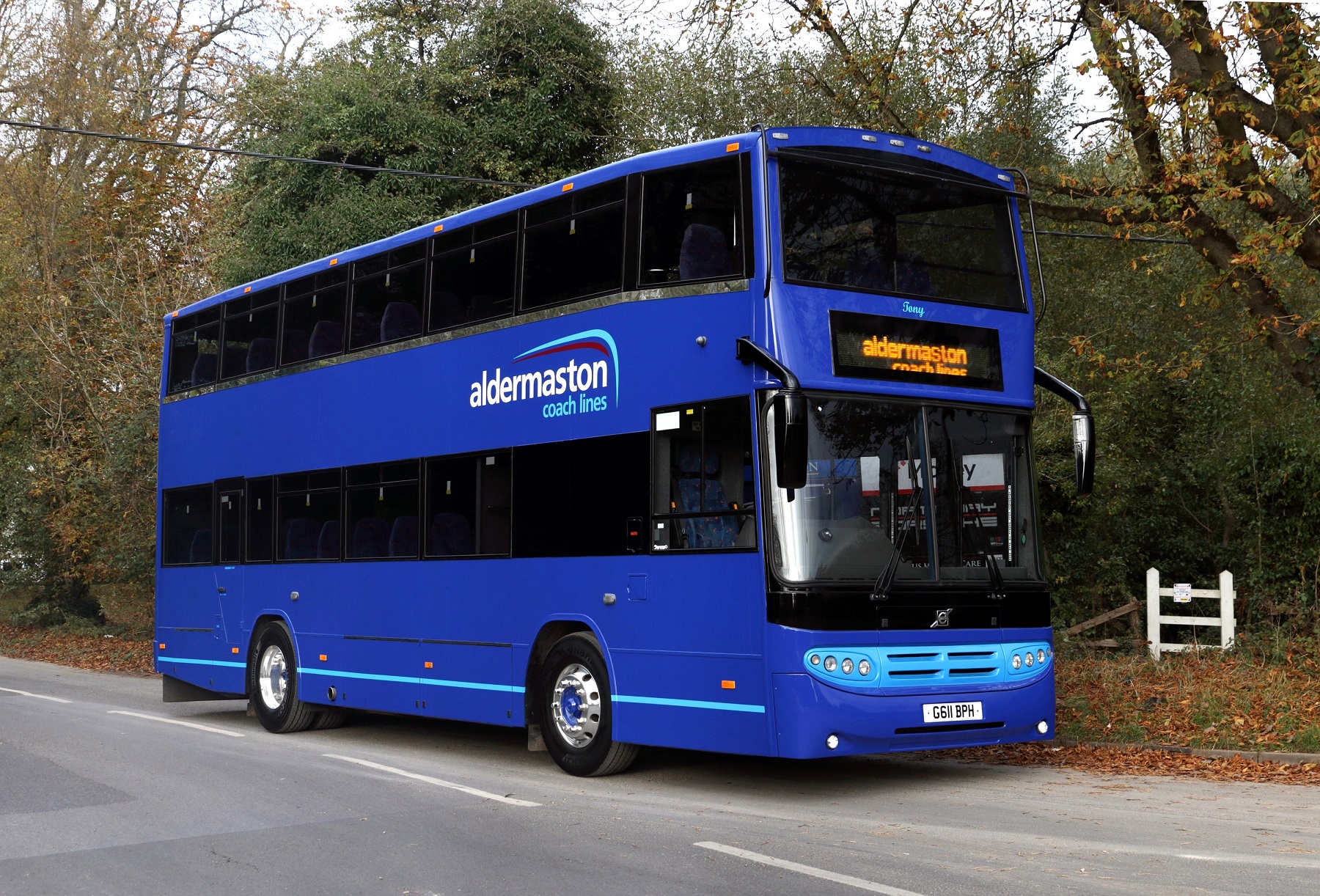
Tri-axle double-decker buses are a niche product. While a similar capacity is available in a twin-deck coach, Nick did not consider that type of vehicle. A bus comes with a price benefit, plus its layout suits the operator’s needs. Experience with Mortons of earlier B9TLs showed that with the right work, there is scope for high-capacity buses to be strong earners.
The existing EvoSetis are always kept busy, and to that end it is likely that more will follow. For MCV, rapidly accelerating success with Volvo on the BZL battery-electric bus in the UK means that it will expand double-deck production capacity via introduction of a dedicated facility.
“We have been highly impressed with the EvoSetis,” Nick explains. “The product is solid, and the support is there. We do not try to pretend that they are coaches. But the scope to up-specify the model is valuable in creating a passenger experience that leans towards a coach. Their versatility allows us to employ them on various types of work, which is beneficial in making the revenue equation stack up.”
A B8L is not for every business, but when specified to suit an operator that has work to justify one, the package is right: The passenger and driver experience is good, seated capacity cannot be beaten, and support is there. Volvo Bus is working hard to grow its business in the UK, and the B8L is a small but important part of that.
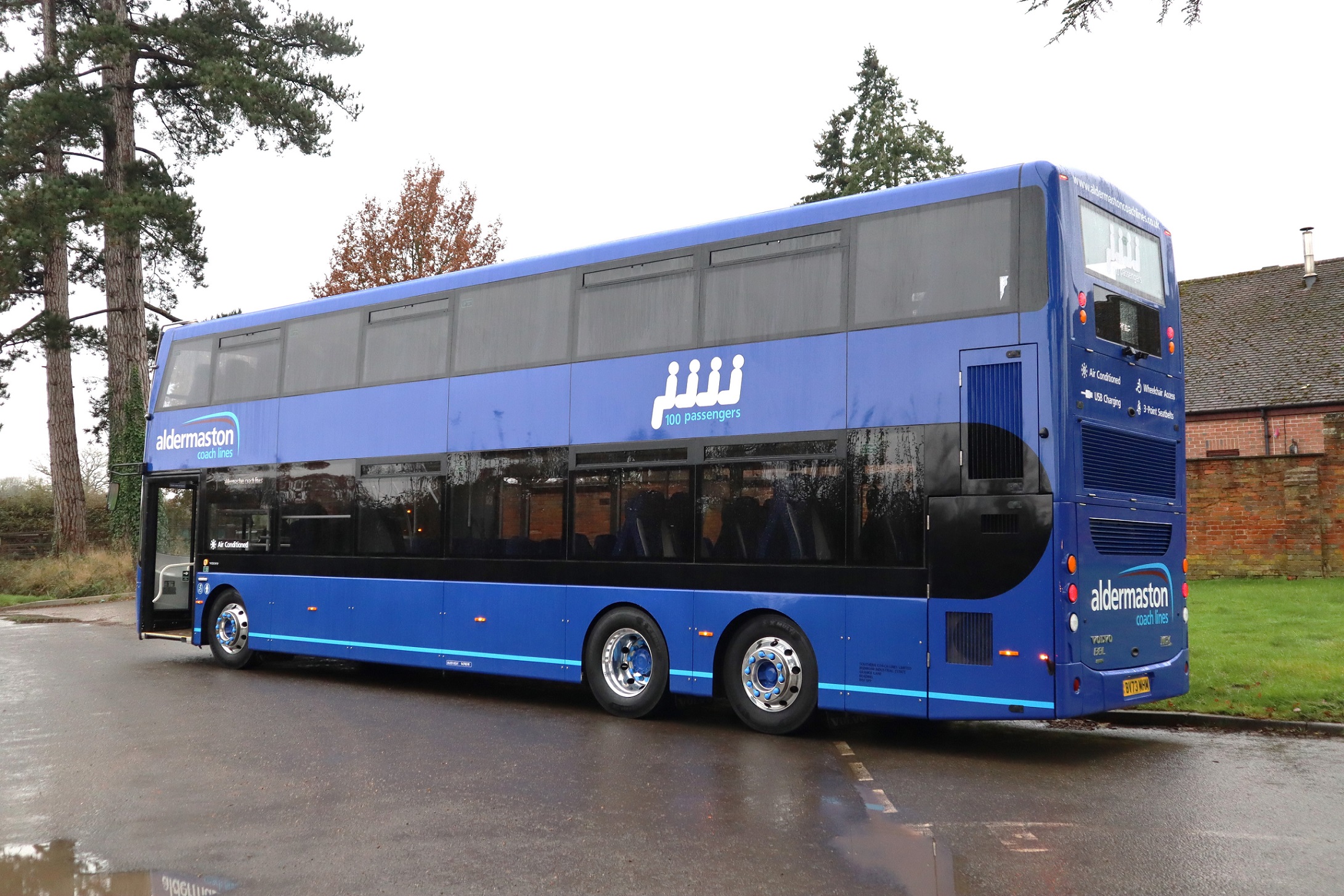
Facts and figures
Engine: 7.7-litre, six-cylinder Volvo D8K
Power:258kW (350bhp) @2,200rpm
Torque: 1,400Nm (1,033 lb ft) @1,200-1,600rpm
Emissions: Euro VI using EGR and SCR
Tyres: 305/70 R22.5
Length: 12.78m
Height: 4.33m
Width: 2.55m
Wheelbase (axles 1-2): 6.56m
Gross weight: 24,750kg
Unladen weight: 14,762kg
Fuel consumption: 8mpg




















